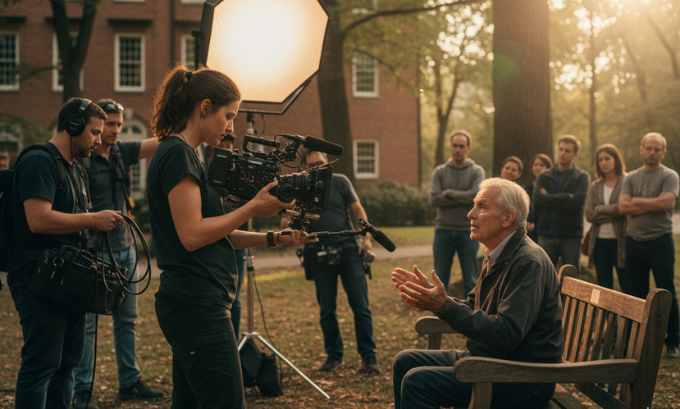Making a documentary is a creative and careful process that transforms real-life stories into powerful, engaging films. Unlike fictional movies, documentaries are built on truth — capturing authentic people, events, and emotions. This guide will walk you through how documentaries are made, step by step. From the earliest stages of research and planning to filming on location and polishing the final edit, each part of the process plays a crucial role in shaping a meaningful story.
You’ll learn what happens during pre-production, production, and post-production, along with practical examples from real projects. Whether you’re an aspiring filmmaker or just curious about how documentaries are made, this guide will help you understand the craft, creativity, and dedication behind every successful documentary film.
Table of Contents
What Is Documentary Filmmaking?
Documentary filmmaking is the art of telling real stories. It can inform, teach, or inspire people. There are three main stages:
- Pre-production – Planning and getting ready.
- Production – Filming the story.
- Post-production – Editing and finishing the film.
Pre-Production: Laying the Foundation
What happens in pre-production? This is the planning stage. Filmmakers do research, write scripts, plan budgets, and make schedules. For example, in the documentary about Jose Martinez, a triple-amputee veteran and adaptive surfer, pre-production included scouting the Canadian Arctic for filming and working with The Art of Documentary (AOD) for help and advice.
Production: Capturing the Story
How is the documentary filmed? Production is when the story comes to life. Jose’s documentary was filmed in the cold and remote Canadian Arctic. The crew used small, portable equipment. They worked on a micro-budget of $5,000.
Post-Production: Crafting the Narrative
What happens in post-production? Filmmakers edit footage, add sound, adjust colors, and finish the film. For low-budget projects, they often use cheap or free software. Feedback from the team helps make the film better.
Real-World Example: Jose Martinez’s Story
Who is Jose Martinez? Jose is a veteran who lost three limbs after an IED explosion in Afghanistan. He healed through adaptive surfing. His journey inspired a documentary. The film was made on a micro-budget and premiered at the New York AOD Festival. It was praised for its powerful story.
Comparison: Micro-Budget vs. Traditional Documentary Production
| Aspect | Micro-Budget Documentary | Traditional Documentary |
|---|---|---|
| Budget | $5,000 | $50,000+ |
| Equipment | Small, cheap | High-end, special |
| Crew Size | Small, flexible | Large, specialized |
| Filming Locations | Remote, hard | Accessible, varied |
| Post-Production Tools | Free or cheap software | Professional software |
FAQs about how documentaries are made
1. What is the first step in making a documentary?
The first step is pre-production, which includes researching the topic, writing a script, and planning the shoot.
2. How long does it take to make a documentary?
The timeline varies; however, micro-budget documentaries can be completed within a few months, depending on the complexity.
3. Can documentaries be made with limited resources?
Yes, many impactful documentaries have been produced on micro-budgets by utilizing creative solutions and efficient planning.
4. What is adaptive surfing?
Adaptive surfing is a sport that allows individuals with disabilities, like veterans, to experience surfing through specialized equipment and techniques.
5. How do filmmakers distribute their documentaries?
Filmmakers can submit their documentaries to film festivals, distribute them online, or partner with streaming platforms for wider reach.
Conclusion
How are documentaries made? Through a structured process of planning, filming, and editing, filmmakers can create compelling stories that resonate with audiences. The journey of Jose Martinez exemplifies how passion and perseverance can lead to impactful storytelling, even on a micro-budget.
Author Bio
Taher
Documentary Filmmaker & Writer
With over a decade of experience in documentary filmmaking, [Your Name] specializes in producing compelling stories on limited budgets. They have contributed to various film festivals and educational platforms, sharing insights on the art of documentary production.
References
- The Art of Documentary. (n.d.). Retrieved from theartofdocumentary.com
- Jose Martinez – Surf Dog Ricochet. (n.d.). Retrieved from surfdogricochet.com
- New York AOD Festival. (n.d.). Retrieved from nycsdff.com
- Mark Bone. (n.d.). Retrieved from markbone.com


